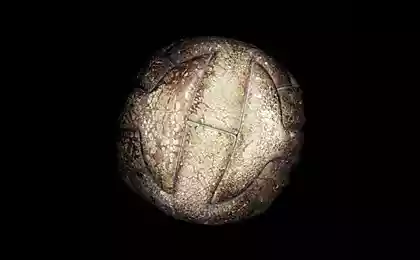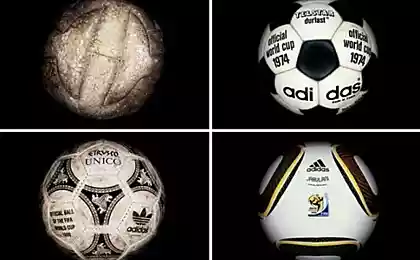686
Inhabitants of the underwater world
The seas and oceans are living the oldest, largest, strongest and most poisonous animals in the world. Many of them look like creatures from another planet. With some of them we learn about today.
29 photos here

1. Anilao - Diving Mecca of the Philippines. The long-standing dream to remove the fish that lives at great depths, I was only the second trip to Anilao and third dive to a depth of about 40 meters. Meet purple fiery Gobi! I was able to see it and do just 5 frames, after which she hid in a hole
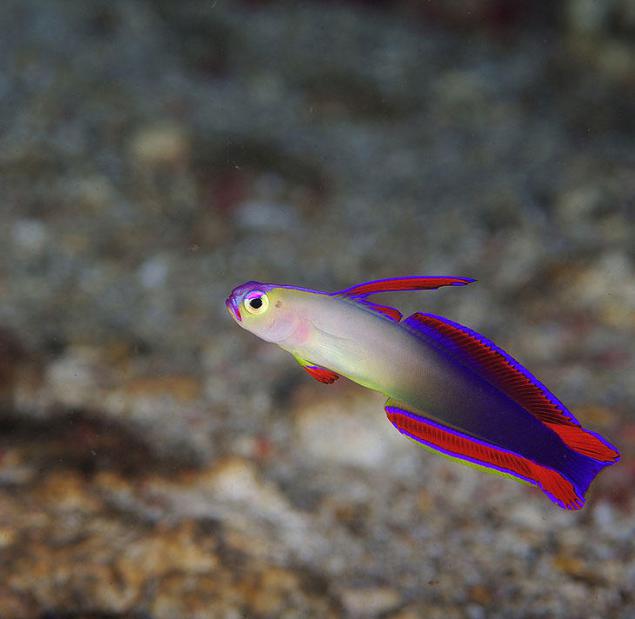
2. Coconut octopus. Philippines. The contrast of white suckers on the trunk octopus makes it look like some sort of alien spaceship!
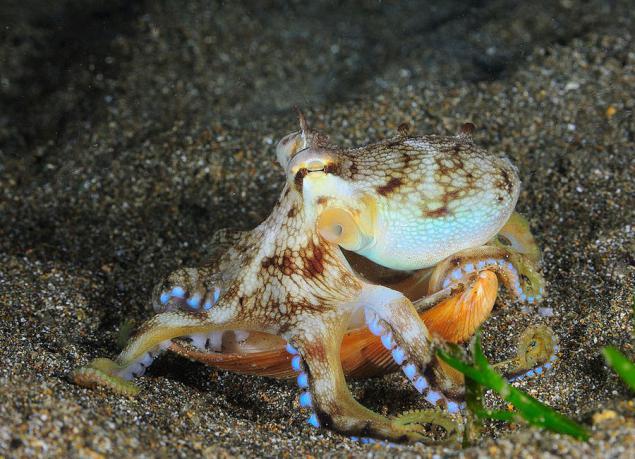
3. Octopus uses the empty halves of coconut as a safe haven, hence its name
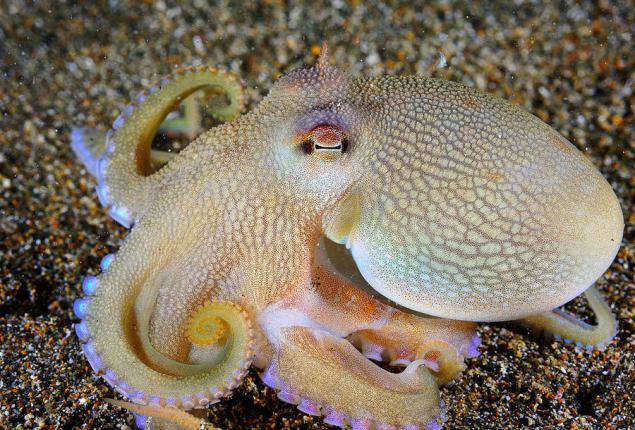
4. I know her as the compass jellyfish, but the smart thing, it is called - Hrizaora pyatischupaltsevaya (Chrysaora quinquecirrha). Removed at the entrance to the bay Ore Bucket in Primorye

5. Medusa tsianeya properly called - tsianeya hairy (Cyanea capillata). It is said that her umbrella can reach a diameter of up to 2.3m, weight - 60kg. Umbrella of the (as in the photo) was about 60-70 cm in diameter
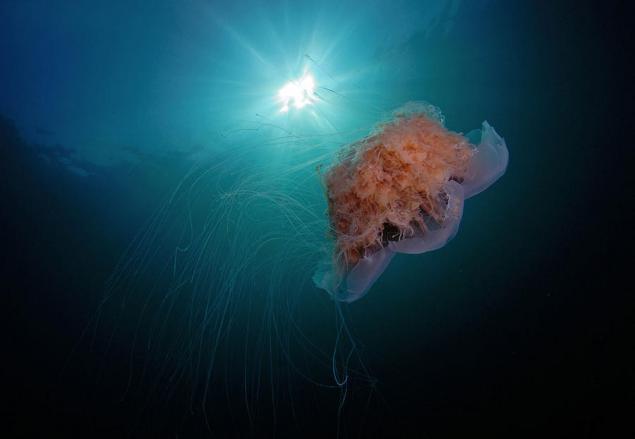
6. Malek dangerous fish lionfish. The size of a little more than 1 cm. Remove the large object size of about 1 cm, which also moved completely nonlinear and 3D mode, and at the same time you're also in the water - it is a great luck. But I was a little bit lucky. Minutes 10-15 dancing with tambourines gave me 4 sharp images of very beautiful and has a dangerous fish.
Samara has long ribbons dorsal and pectoral fins, these fins are concealed luxury veeropodobnyh sharp poisonous needles. Prick spines of the fish is very painful

7. This eye octopus Dofleyna

8. Trying to get away from the diver. In most cases, octopus diver prefer the approach flight
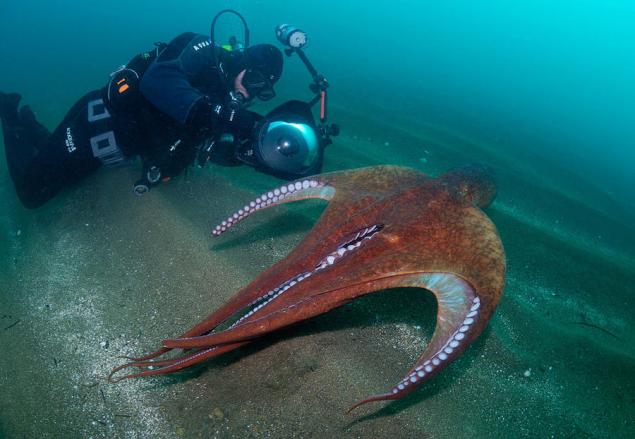
9. Beautiful nudibranchs Nembrotha lineolata meet on the coast of East Africa, Australia, Fiji and the Solomon Islands. The special features of the structure of nudibranchs are no sinks
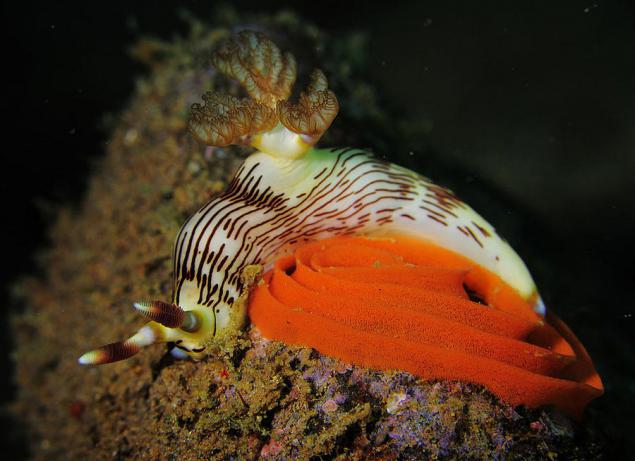
10. This bright and colorful marine life has a reputation as a fighter, able to withstand even larger opponents. This animal called sea crab mantis (Peacock mantis shrimp or Odontodactylis scyllarus), according to some sources he world champion in the category of impact force minimum weight * maximum acceleration. The powerful forelimbs can strike like a hammer for hundredths of a second, so they break up the thick limestone shells shells or skeletons of chitin opponents. Extracts and too curious divers on a finger or the hapless photographer for glass lenses underwater case. Unique high-sensitive eyes will always find somewhere poudachnee hit, so this pouvazhitelnee cancers.
It was an old dream is removed Mantis-peacock with caviar

11. Rumor has it that it hit the front hand smashes the glass in the aquarium. Length up to 18 cm

12. Imperial shrimp. Imperial shrimp painted as well as marine animals, which live in the neighborhood, and at the same time demonstrate a fantastic coloring. Sometimes, looking at the two different colored shrimp, it is difficult to believe that they belong to the same species

13. Two sea horses. Yellow pygmy horses on gorgonian (horny corals). The unusual shape of the ridge body resembles a chess figure horse. Numerous long ribbon-like spines and leathery outgrowths located on the body of the skate, make it invisible among the seaweed and inaccessible to predators. Dimensions seahorses are from 2 to 30 cm, depending on the species. This is something very small - less than 1 cm
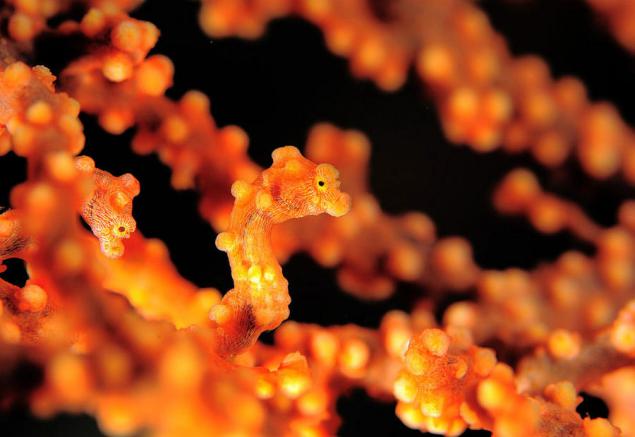
14. fulfill the dream of a photographer, and I made his self-portrait on the background of a whale shark

15. trevally - large predatory fish (80 cm). Quick predators living among the reefs and in the open ocean

16. These silver fish guard, and they are so beautiful that you forget that they are edible
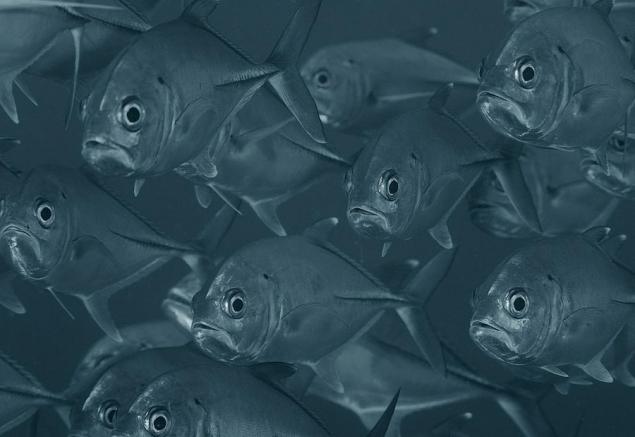
17. Whale shark. The largest of the sharks and the largest of modern fish. Its size often exceeds 10 m, data are available for 18-foot and even 20-meter instances, although such individuals are found only rarely
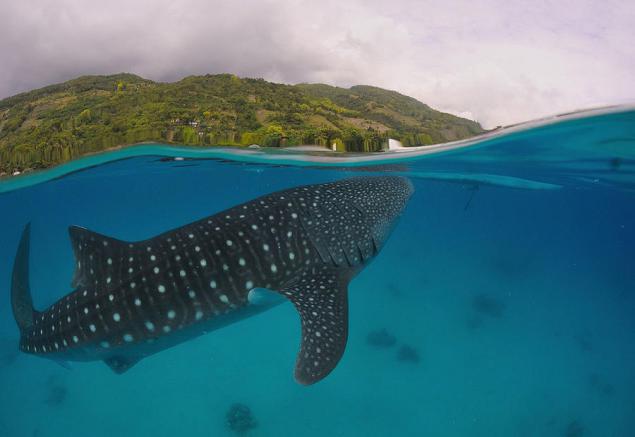
18. Giant frog fish. Pescador Island, Philippines. At a depth of approximately 12-15 m in the sponge usually sits large and gray "frog". I was able to remove the process of yawning just got (probably) his camera flash)))
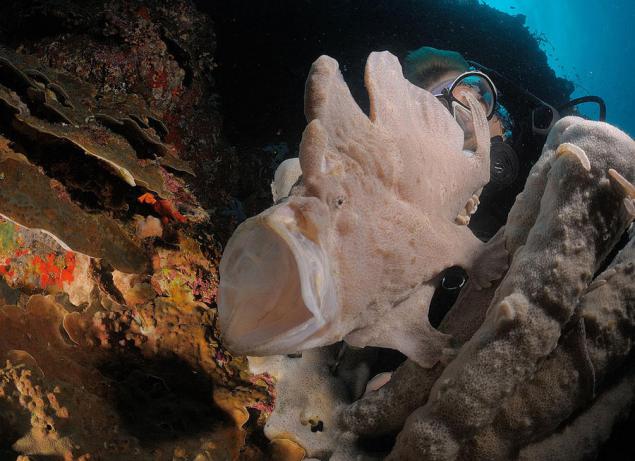
19. Small moray eel peeks out of coral. These fish are from the family of acne occur in the Atlantic and Indian oceans, widely distributed in the Mediterranean and Red seas. It reaches a length of 3 m and weight - 50 kg. Moray eels live in the bottom layer of water, it can be said on the bottom. Day moray sitting in the crevices of rocks or coral heads sticking out and they usually twitching from side to side, looking for prey swims at night are chosen from shelters to hunt
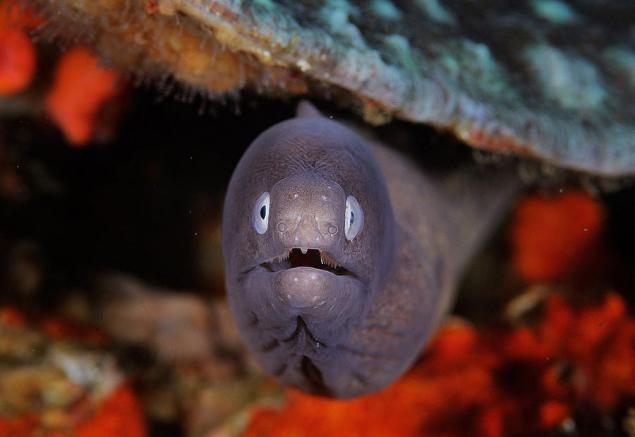
20. Blue ribbon eel - eel tape up to 120 cm. Usually, only his head visible with constantly open mouth of the burrows in the ground. Meet him out of the hole - a rarity. Changes the floor of male to female and has three colors indicating the transition phase: black-early, blue and yellow - the middle and yellow - mature female
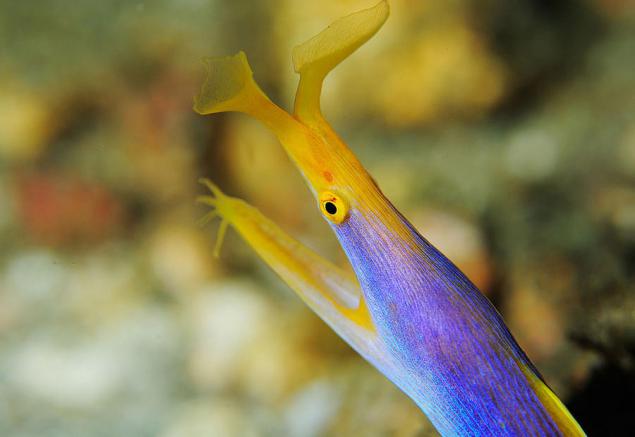
21. Green melibe (green melibe). Clam predator. The specimen is very unpleasant kind, interesting feature in it - there is a huge hood, which he throws at his victim and turns into an edible mass with sulfuric acid (if I'm wrong - correct). Prey can be small crabs, shrimp

22. The Republic of Palau. Coral
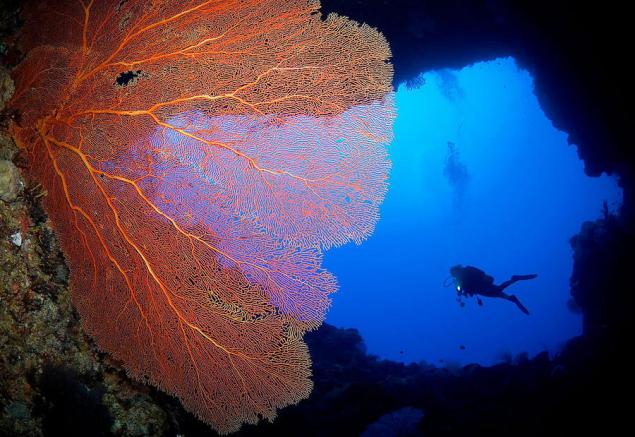
23. The gray reef shark accompanied trevally. Blue corner (Blue Corner), the Republic of Palau - it is one of signature places in the world of the world of diving. In a corner of the reef, the sharp end sticking out into the ocean, twice a day rolled powerful tides, creating a very strong currents. And it is here full of life. Reef sharks, napoleons, schools of barracuda and trevally, turtles - they are all there permanently
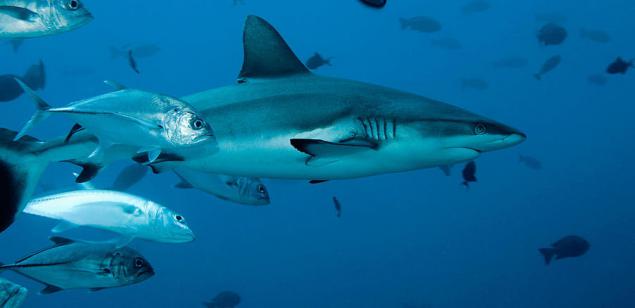
24. Sharks currently catwalk - they leisurely stroll along a row of divers, squinting his eyes, and keeping a distance of 3-7 meters

25. Napoleon (lat. Cheilinus undulatus, Eng. Humphead wrasse) - Fish, reaches a length of 2.30 m. Distributed in the Indian and Pacific Oceans
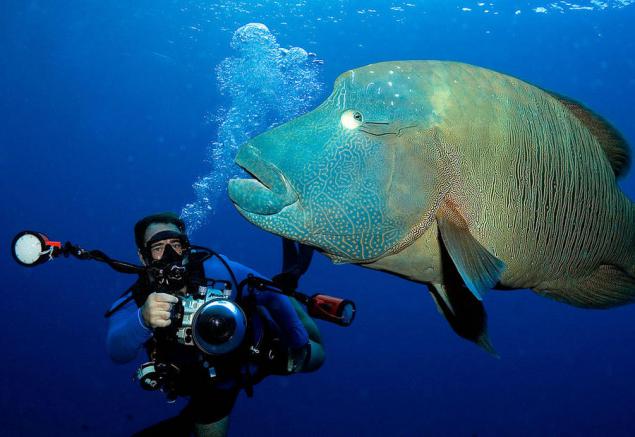
26. Despite its size, human Napoleon generally is harmless, except for some cases. Napoleon as smelt in the foam, conducted in chicken eggs, they simply adore. And if the fish decides that you hide it from him, he could ram his forehead

Source:
29 photos here

1. Anilao - Diving Mecca of the Philippines. The long-standing dream to remove the fish that lives at great depths, I was only the second trip to Anilao and third dive to a depth of about 40 meters. Meet purple fiery Gobi! I was able to see it and do just 5 frames, after which she hid in a hole

2. Coconut octopus. Philippines. The contrast of white suckers on the trunk octopus makes it look like some sort of alien spaceship!

3. Octopus uses the empty halves of coconut as a safe haven, hence its name

4. I know her as the compass jellyfish, but the smart thing, it is called - Hrizaora pyatischupaltsevaya (Chrysaora quinquecirrha). Removed at the entrance to the bay Ore Bucket in Primorye

5. Medusa tsianeya properly called - tsianeya hairy (Cyanea capillata). It is said that her umbrella can reach a diameter of up to 2.3m, weight - 60kg. Umbrella of the (as in the photo) was about 60-70 cm in diameter

6. Malek dangerous fish lionfish. The size of a little more than 1 cm. Remove the large object size of about 1 cm, which also moved completely nonlinear and 3D mode, and at the same time you're also in the water - it is a great luck. But I was a little bit lucky. Minutes 10-15 dancing with tambourines gave me 4 sharp images of very beautiful and has a dangerous fish.
Samara has long ribbons dorsal and pectoral fins, these fins are concealed luxury veeropodobnyh sharp poisonous needles. Prick spines of the fish is very painful

7. This eye octopus Dofleyna

8. Trying to get away from the diver. In most cases, octopus diver prefer the approach flight

9. Beautiful nudibranchs Nembrotha lineolata meet on the coast of East Africa, Australia, Fiji and the Solomon Islands. The special features of the structure of nudibranchs are no sinks

10. This bright and colorful marine life has a reputation as a fighter, able to withstand even larger opponents. This animal called sea crab mantis (Peacock mantis shrimp or Odontodactylis scyllarus), according to some sources he world champion in the category of impact force minimum weight * maximum acceleration. The powerful forelimbs can strike like a hammer for hundredths of a second, so they break up the thick limestone shells shells or skeletons of chitin opponents. Extracts and too curious divers on a finger or the hapless photographer for glass lenses underwater case. Unique high-sensitive eyes will always find somewhere poudachnee hit, so this pouvazhitelnee cancers.
It was an old dream is removed Mantis-peacock with caviar

11. Rumor has it that it hit the front hand smashes the glass in the aquarium. Length up to 18 cm

12. Imperial shrimp. Imperial shrimp painted as well as marine animals, which live in the neighborhood, and at the same time demonstrate a fantastic coloring. Sometimes, looking at the two different colored shrimp, it is difficult to believe that they belong to the same species

13. Two sea horses. Yellow pygmy horses on gorgonian (horny corals). The unusual shape of the ridge body resembles a chess figure horse. Numerous long ribbon-like spines and leathery outgrowths located on the body of the skate, make it invisible among the seaweed and inaccessible to predators. Dimensions seahorses are from 2 to 30 cm, depending on the species. This is something very small - less than 1 cm

14. fulfill the dream of a photographer, and I made his self-portrait on the background of a whale shark

15. trevally - large predatory fish (80 cm). Quick predators living among the reefs and in the open ocean

16. These silver fish guard, and they are so beautiful that you forget that they are edible

17. Whale shark. The largest of the sharks and the largest of modern fish. Its size often exceeds 10 m, data are available for 18-foot and even 20-meter instances, although such individuals are found only rarely

18. Giant frog fish. Pescador Island, Philippines. At a depth of approximately 12-15 m in the sponge usually sits large and gray "frog". I was able to remove the process of yawning just got (probably) his camera flash)))

19. Small moray eel peeks out of coral. These fish are from the family of acne occur in the Atlantic and Indian oceans, widely distributed in the Mediterranean and Red seas. It reaches a length of 3 m and weight - 50 kg. Moray eels live in the bottom layer of water, it can be said on the bottom. Day moray sitting in the crevices of rocks or coral heads sticking out and they usually twitching from side to side, looking for prey swims at night are chosen from shelters to hunt

20. Blue ribbon eel - eel tape up to 120 cm. Usually, only his head visible with constantly open mouth of the burrows in the ground. Meet him out of the hole - a rarity. Changes the floor of male to female and has three colors indicating the transition phase: black-early, blue and yellow - the middle and yellow - mature female

21. Green melibe (green melibe). Clam predator. The specimen is very unpleasant kind, interesting feature in it - there is a huge hood, which he throws at his victim and turns into an edible mass with sulfuric acid (if I'm wrong - correct). Prey can be small crabs, shrimp

22. The Republic of Palau. Coral

23. The gray reef shark accompanied trevally. Blue corner (Blue Corner), the Republic of Palau - it is one of signature places in the world of the world of diving. In a corner of the reef, the sharp end sticking out into the ocean, twice a day rolled powerful tides, creating a very strong currents. And it is here full of life. Reef sharks, napoleons, schools of barracuda and trevally, turtles - they are all there permanently

24. Sharks currently catwalk - they leisurely stroll along a row of divers, squinting his eyes, and keeping a distance of 3-7 meters

25. Napoleon (lat. Cheilinus undulatus, Eng. Humphead wrasse) - Fish, reaches a length of 2.30 m. Distributed in the Indian and Pacific Oceans

26. Despite its size, human Napoleon generally is harmless, except for some cases. Napoleon as smelt in the foam, conducted in chicken eggs, they simply adore. And if the fish decides that you hide it from him, he could ram his forehead

Source:













